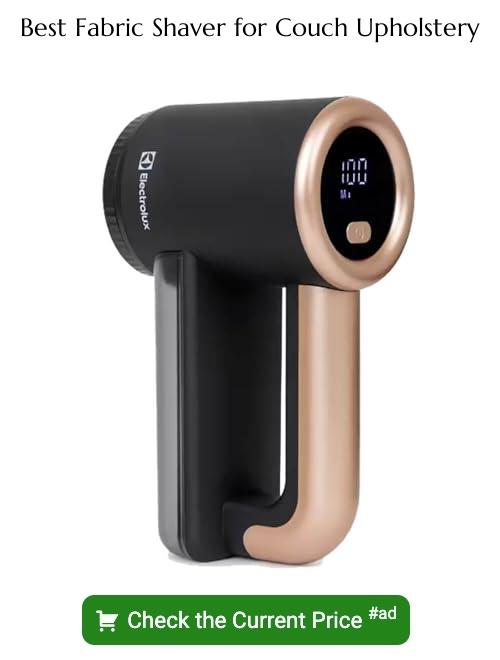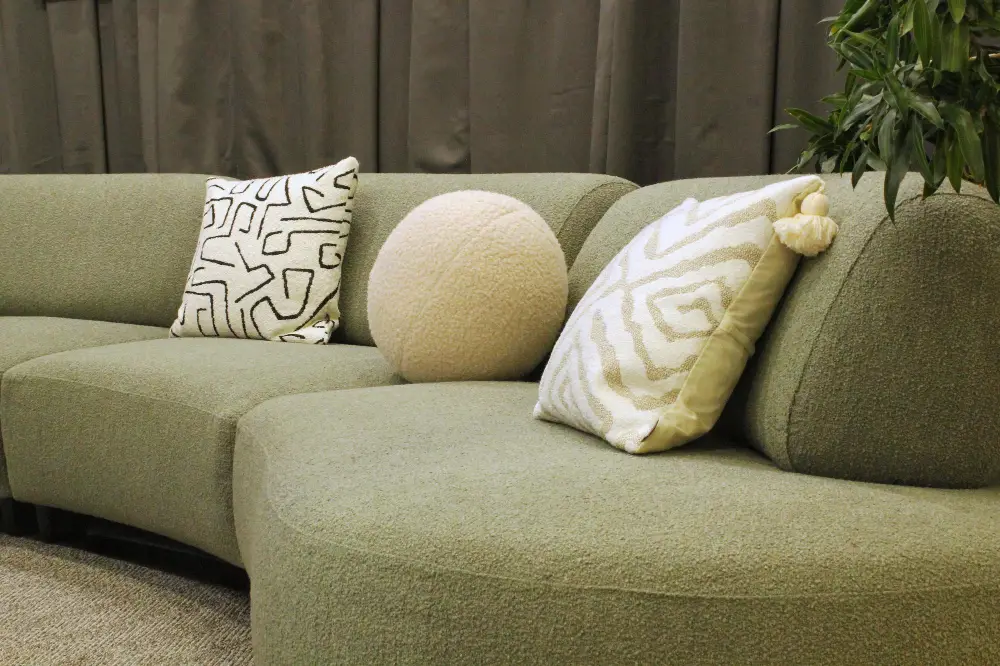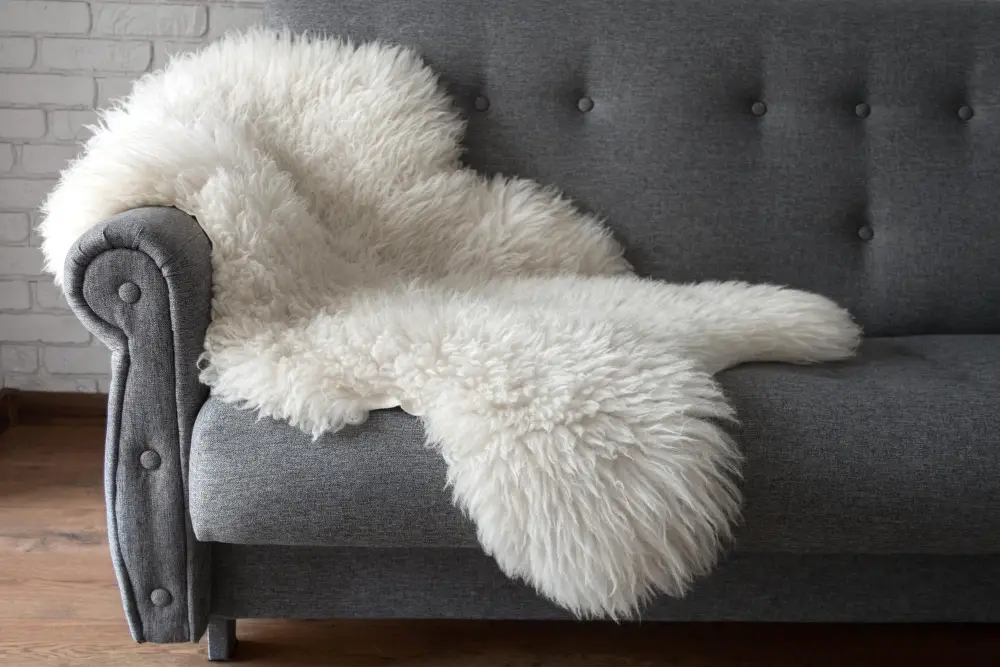Last updated on
This article offers step-by-step, easy-to-follow instructions to effectively remove pilling from your couch, helping to restore its original appeal.
Key takeaways:
- Equip yourself with the right tools: fabric shaver, pumice stone, pill comb, razor, sticky tape, lint roller, scissors
- Use a fabric shaver to remove pills: clean couch, gentle circular motion, minimal pressure, collect pills regularly
- Test removal method on inconspicuous area first: avoid damage or further pilling
- Care tips to minimize pilling: rotate and flip cushions, vacuum weekly, avoid direct sunlight, protect from pets, follow manufacturer’s care instructions
- Choose couch fabrics less prone to pilling: tight weave, high-quality fibers, synthetic blends, high thread count
Table of Contents
Tools Needed to Remove Pills From Upholstery Fabric
Equipping yourself with the right tools is essential for effectively tackling the nuisance of pilling on your couch. One of the most reliable instruments for this task is a fabric shaver or defuzzer, which comes in electric and manual versions. Electric fabric shavers are efficient and require less effort, while manual options offer more control and are typically more affordable.
Alternatively, a pumice stone can be used with care, gently grazing the surface to pull away the pills. Another option is a pill comb or a specific upholstery brush designed to lift and cut the fabric pills without damaging the underlying material.
For those preferring a DIY approach, a common household razor can be used with caution to shave off pills, moving in short, light strokes to avoid cutting the couch fabric. Sticky tape or a lint roller also serves as an immediate solution to pick up loose pills, though it’s more of a quick fix than a method of removal.
Lastly, a pair of scissors may be handy for snipping away any stubborn pills that other methods cannot remove. Ensuring these tools are at hand before starting the process will streamline the removal and help restore your couch’s smooth appearance.
How to Use a Fabric Shaver to Remove Pills
Begin by ensuring your couch is clean and free of debris. Switch on your fabric shaver and hold it at a slight angle against the upholstery. Move it in a gentle, circular motion, allowing the blades to lift and trim the pills. Apply minimal pressure to avoid damaging the fabric.
Empty the shaver’s collection compartment regularly to maintain its efficiency. Always keep the device moving to prevent creating bald spots or tearing the material. For the best results, stretch the fabric slightly with your free hand, providing a smooth surface for the shaver to work on.
Patience is key—work slowly over the affected areas to uniformly restore the couch’s texture. Afterward, use a lint roller or tape to pick up any strays, leaving your couch looking fresh and revitalized.
The Importance of Testing On an Inconspicuous Area First
Before tackling the entire couch surface, identify an out-of-sight spot to test your chosen pilling removal method. The underside of the couch or beneath the cushions often serves as an ideal location for this preliminary step. Doing so ensures that the fabric reacts well to the treatment, safeguarding against potential damage like discoloration, tearing, or further pilling.
Take note of the fabric’s resilience to your method. If using a fabric shaver, test with low settings to gauge how aggressively it cuts. For manual methods, such as using scissors or a pill comb, apply gentle pressure and observe the results. If the fabric maintains its integrity without adverse effects, proceed with confidence. If negative changes occur, consider an alternative method or consult a professional. This careful approach extends the life of your couch by preserving the fabric’s appearance and texture.
Care Tips to Minimize Pilling On Your Couch
To keep your couch looking fresh and free from unsightly pilling, regular maintenance is key. Here are some effective tips:
- Rotate and flip removable cushions frequently to distribute wear evenly.
- Vacuum the upholstery weekly using an attachment with soft bristles to lift fibers and prevent matting.
- Avoid direct sunlight which can weaken fibers and increase the likelihood of pilling over time.
- Implement a no-pet policy to protect the fabric from the rough texture of claws and pet hair, which can contribute to pilling.
- Choose throws or blankets as a protective layer especially in high-use areas of the couch.
- Follow the manufacturer’s care instructions for proper cleaning as some products may be too harsh and damage the fabric’s surface.
Implementing these care practices can significantly reduce the formation of pills and extend the life of your couch’s fabric.
How to Choose Couch Fabrics That Are Less Prone to Pilling
When selecting fabrics for a new couch, consider materials with a tighter weave and high-quality fibers, as these are generally more resistant to pilling. Synthetics like nylon and polyester blend well with natural fibers to enhance durability, while high-quality natural fibers like linen and wool can also be less prone to pilling.
Avoid loose weaves and short, loose fibers like those in some types of chenille and tweed, as they tend to pill more easily. Instead, opt for tightly woven textiles or couches with a higher thread count, as these are designed to withstand more wear and tear without forming those pesky balls of fiber.
FAQ
How do you fix a pilling sofa?
To fix a pilling sofa, employ a fabric pill remover or de-pilling machine, designed to delicately shave off pills and loose fibers without causing harm to the overall fabric or couch structure.
What is the easiest way to remove pilling?
The easiest way to remove pilling is by rubbing a clean pumice stone or a sweater stone over the affected parts of the fabric.
What causes pilling on sofas?
The primary cause of pilling on sofas is friction, which results from people sitting, moving around, and rubbing against the furniture, leading to weakened fabric fibers that break or loosen over time.
What tools are effective in removing pills from a sofa?
Effective tools for removing pills from a sofa include fabric shavers, lint rollers, and pumice stones.
Does the type of fabric influence the occurrence of pilling on couches?
Yes, the type of fabric greatly influences the occurrence of pilling on couches.
What preventive measures can be employed to minimize sofa pilling?
To minimize sofa pilling, one should opt for tightly woven fabrics, use a fabric protector, regularly brush the sofa using a fabric brush, and avoid direct sunlight exposure as it can weaken fabric fibers.
You may also like to read:



